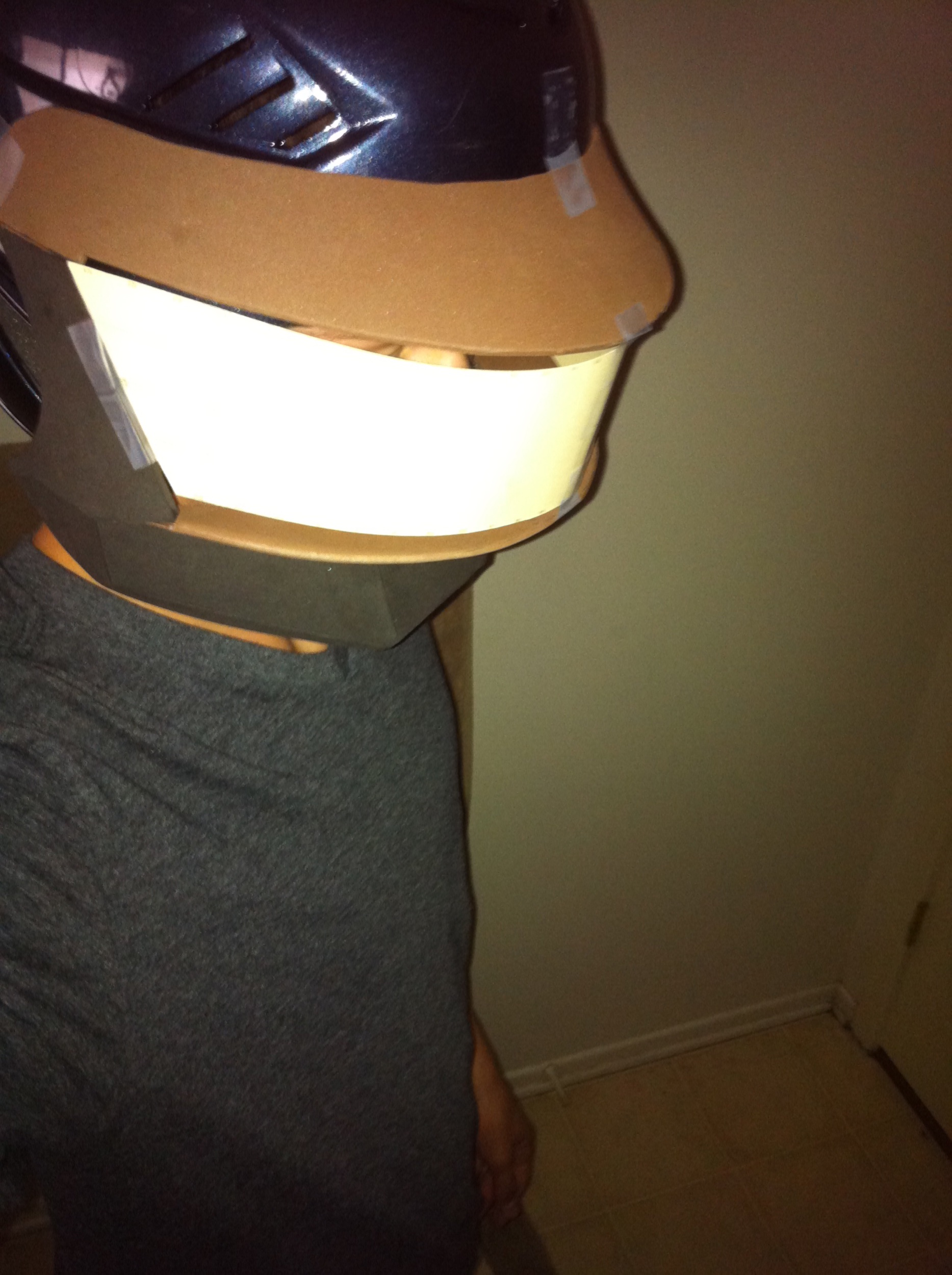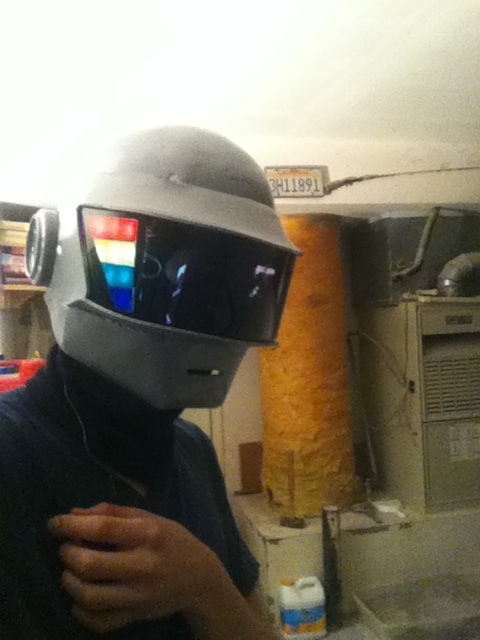Daft Punk Helmets
LED accents
technique education
multiple materials
2012
These helmets, while awesome and a fun build, were really just a trial for learning the do’s and don’ts of working with EVA foam, a high density foam similar to a yoga mat. My friend @duflinsmcduff and I needed to try our hand working with EVA foam in preparation for our next Foam project, our Iron-man and War Machine costumes for halloween that year. I created the silver Thomas helmet while he made the gold Guy Manuel Helmet.
My helmet base was a store-bought child baseball helmet. There were several vents and shapes built in that I knew needed to be smoothed out and turned first to a technique I thought up myself, covering the helmet with plastic/suran wrap to smooth out the entire round of the helmet. This did not work at all. When spray paint was applied, the texture of the wrinkled plastic wrap was very visible giving the aesthetic of reptilian skin (to see this technique applied a few years after, please see the page covering the Dragon I made for a community theatre show). I then turned to a technique I found online using a car body filler called Bondo. If you’ve worked with Bondo before, you know that means sanding for days. For the high schooler who didn’t have access to power tools, this meant a lot of hand sanding. Days of hand sanding. While it wasn’t perfect or what I wanted for it, it was good enough for the time constraint.
The front sections of the helmet were shaped with thin pieces of EVA foam and attached with hot glue. The ear pucks were picked from the bottom of soda cans that were glued to the base helmet. After the body of the helmet was finished, it was coated with a sprayable rubber called PlastiDip.
I had planned to create am LED array to cover the front visor by soldering individual LEDs across an extra visor and programming them with several preset animations. I gave myself a 12 hours to do this. If you know anything or have experience with electronics, you’ll know this is absolutely the worst time frame for a beginner. Also, the visor broke wile it was being programmed so, cool. Awesome. Dreams, crushed. Thankfully I was able to slip in a pair of illuminated paper boxes on either side to give a somewhat pop of light. There also was a speaker placed into one of the ear pucks to play music but was never used ‘in the field.’
The visors were heat formed from a tinted sheet of acrylic we bought at the local hardware store. My helmet, was formed over a cardboard buck to achieve the same curve necessary for the helmet.
Overall, this learning experience was, exactly that. A learning experience. There were several challenges going into this project and several more presented along the way. Learning about different types of techniques and how the materials work together from this project has really escalated my technical skills moving forward. I made this so-so helmet and 5 months later, had a finished Iron-man suit, I call that a success. Below are photos from the build process along with a few shots out in the wild of my high school. Please enjoy.
- Zach




























































